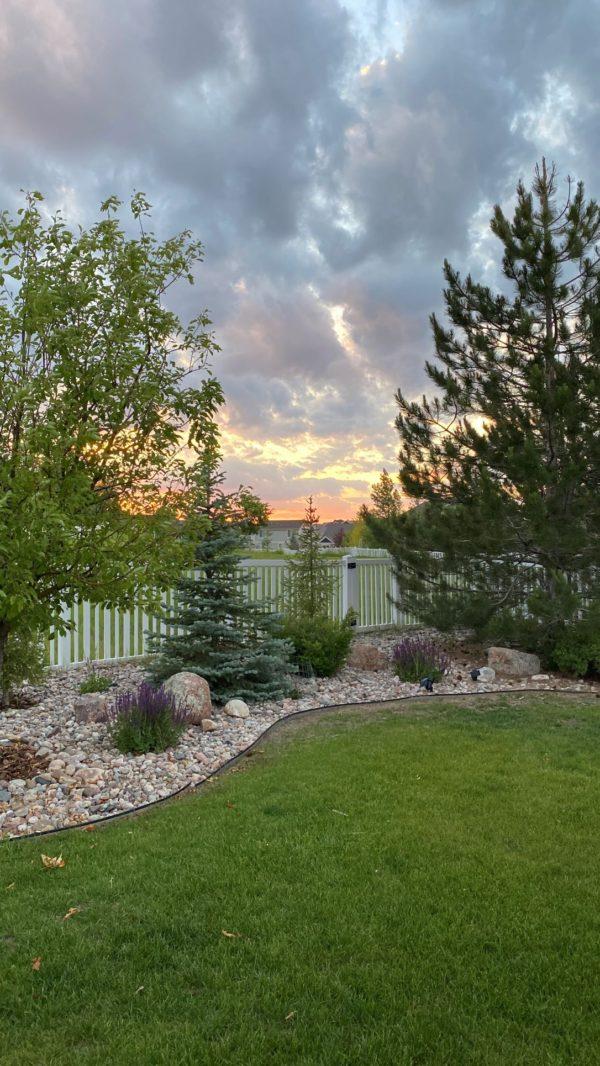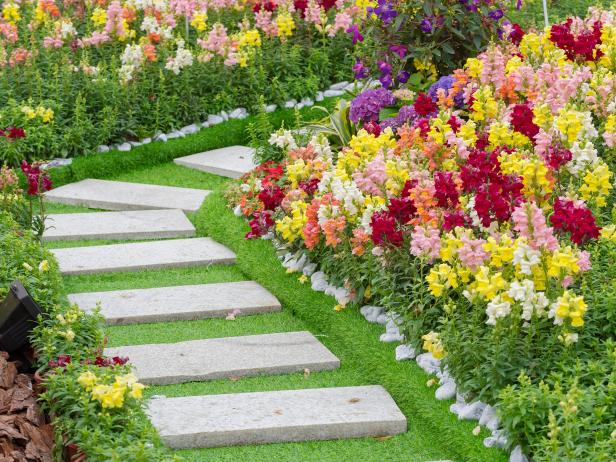The Ultimate Guide To Landscaping
Backyard Design: Creating Outdoor Spaces Involves Arranging Plants, Pathways, And Features To Enhance Natural Charm And Functionality
Tracing the Roots of Landscape Style
Have you ever roamed through a garden and felt transferred to another age? Landscape design isn't simply about planting flowers; it's a story engraved into the earth, shaped over centuries by culture, climate, and imagination. From the official gardens of Renaissance Europe to the wild, naturalistic settings preferred by the English Romantic movement, the development of landscape style exposes mankind's shifting relationship with nature.
The Ancient Foundations
Long before contemporary tools and digital strategies, early civilizations crafted landscapes with symbolic intent. here The hanging gardens of Babylon, typically hailed as a wonder of the ancient world, integrated engineering marvel with lush plant to produce a sanctuary in the desert (Landscaping Services). The Japanese zen gardens echo simplicity and meditation, proving that landscape design can be both practical and profound
Secret Milestones in Landscape Design History
| Period | Particular | Significant Impact |
|---|---|---|
| Ancient | Symbolism and utility | Egyptian and Babylonian gardens |
| Renaissance | Balance and order | Italian formal gardens |
| 18th Century | Naturalistic, pastoral landscapes | English landscape gardens |
| Modern | Ecological sensitivity and innovation | Contemporary sustainable style |
Why Does This Matter Today?
Isn't it remarkable how the concepts of landscape style from centuries ago still affect our yards and parks? When creating a space now, comprehending its historic context improves the process. For instance, including aspects of balance from the Renaissance can bring balance, while welcoming organic kinds lines up with today's environmental priorities.
- Historic knowledge notifies material choices and plant choice.
- Conventional layouts can blend with modern sustainability practices.
- Styles evoke psychological actions by taking advantage of cultural memory.
Reflect on a garden you like-- does it whisper stories of previous design movements or boldly declare originalities? Landscape design is a living dialogue between history and innovation, where every course and plant tells a tale.
Unwinding the Principles That Shape a Landscape
Ever questioned why some gardens seem to whisper secrets while others shout chaos? The response depends on the concepts of landscape design. Balance, rhythm, and unity are more than simply expensive copyright; they are the invisible threads weaving a tapestry that pleases the eye and calms the soul.
Balance isn't simply about symmetry. Think of a huge oak tree on one side and a cluster of delicate flowers on the other-- visual weight matters, not identical shapes. It's like a conversation where both voices are heard without overpowering one another.
Elements That Bring Life to Your Outside Canvas
- Line: Guides the observer's eye, whether through a winding course or a row of hedges.
- Kind: Shapes that produce structure; consider the contrast between round shrubs and angular rocks.
- Texture: The roughness of bark against smooth leaves includes depth and intrigue.
- Color: Plays with state of mind-- cool blues soothe, while intense reds stimulate.
- Space: The breathing space that avoids overcrowding and turmoil.
Specialist Tips on Harmonizing These Elements
- Start by sketching your location, marking existing features-- do not undervalue the power of an easy illustration.
- Use repetition of shapes or colors to create rhythm, however prevent monotony by introducing unanticipated focal points.
- Think about the seasons; what looks sensational in spring may disappear by autumn-- evergreens can anchor your design year-round.
In my early projects, overlooking scale led to a garden overshadowed by towering trees, leaving no space for underplanting. Lesson found out: constantly measure and envision in three dimensions. Does your design welcome exploration or confusion? Mastering these landscape design aspects changes areas from simple plots of land into immersive experiences.
Exploring the Diversity of Landscape Style Styles
Why settle for a cookie-cutter garden when the world of landscape style uses a spectrum of designs that can transform a simple lawn into a living work of art? From the structured beauty of formal gardens to the wild, untamed charm of naturalistic designs, each type welcomes an unique story to unfold. Ever noticed how a Japanese garden whispers calmness while a Mediterranean yard shouts lively life?
Popular Styles & & Their Signature Elements

- Formal: Balance rules here, with clipped hedges and geometric patterns assisting the eye.
- Casual: Free-flowing lines and natural plant groupings mimic nature's randomness, making area feel relaxed and inviting.
- Contemporary: Minimalist and sleek, this design mixes hardscapes like concrete and steel with carefully chosen plant.
- Rustic: Think rough textures, native plants, and reclaimed products that echo countryside charm.
- Tropical: Vibrant foliage and vibrant flowers create an immersive, lush atmosphere best for warm climates.
Insider Tips for Picking the Right Style
One secret frequently neglected: soil and environment dictate what grows, not just visual appeals. Don't let the urge for unique plants sabotage your style. Instead, welcome native species that need less water and care, lining up sustainability with style. Ever tried layering textures and heights to develop depth? An easy trick like planting ornamental yards behind shorter perennials can breathe life into flat landscapes.
Table: Style Characteristics vs. Practical Considerations
| Style | Maintenance Level | Best For | Secret Materials |
|---|---|---|---|
| Formal | High | Classic homes, public gardens | Boxwood, stone, gravel |
| Casual | Moderate | Family backyards, natural settings | Native plants, mulch, wood |
| Contemporary | Low to moderate | Urban areas, modern-day homes | Concrete, metal, succulents |
| Rustic | Low | Rural residential or commercial properties, cabins | Natural stone, wildflowers |
Ever battled with envisioning how a design might suit your space? Sketching or digital modeling can expose subtleties unseen by the naked eye. Keep in mind, a cohesive landscape style isn't simply about plants; it has to do with developing an environment that feels like an extension of your own character.
:max_bytes(150000):strip_icc()/GettyImages-494526921-def1d9162bc84fab8120e8558e779df1.jpg)
Precision Meets Imagination: Tools That Forming the Landscape
Ever tried sculpting a masterpiece with blunt instruments? That's how landscape style feels without the ideal toolkit. From the modest measuring tape to sophisticated digital software application, the arsenal of tools straight influences the last visual and functionality of any job. For circumstances, a laser level can be a video game changer when you need to guarantee perfect grade and drain-- something every landscape designer obsesses over however couple of customers notice.
Vital Instruments for each Landscape Designer
- Measuring tapes and stakes for precise spacing and design
- Soil test kits to evaluate pH and nutrient levels, diving deeper than simply "excellent dirt"
- Sketching tools: pencils and graph paper for early conceptualization
- Digital style software application that simulates sunshine and shadow patterns over seasons
- Pruning shears and hand saws, indispensable for forming living elements
Techniques That Turn Soil into Stories
Do you understand why contouring a garden bed matters beyond visual appeals? It manages water overflow, minimizing erosion and safeguarding root systems. It's a subtle art of balancing nature's whims with human intention. When setting out paths, consider the natural walking patterns-- forcing rigid, straight lines typically backfires, both aesthetically and functionally.
One lesser-known technique is using xeriscaping methods to create drought-resistant landscapes. It's not practically conserving water; it has to do with weaving a resilient tapestry that thrives with very little intervention. Integrate native plants and layer textures to develop depth and year-round interest.
| Method | Function | Professional Pointer |
|---|---|---|
| Terracing | Handle sloped land to prevent soil erosion | Use keeping walls with natural stone for resilience and visual harmony |
| Mulching | Retain wetness and suppress weeds | Organic mulches enhance soil health as they decay |
| Layering | Produce visual interest and environmental balance | Combine groundcovers, shrubs, and trees with staggered heights |

Innovative Outdoor Spaces in San Diego County
San Diego County is renowned for its varied landscapes, stretching from gorgeous coastal beaches to rugged inland mountains and extensive deserts. Home to over three million citizens, the region offers a lively mix of cultural tourist attractions, outdoor activities, and natural appeal. Popular destinations consist of Balboa Park, understood for its gardens and museums, and the picturesque Torrey Pines State Natural Reserve. The mild, Mediterranean environment supports a variety of plant life, making it a perfect location for ingenious and sustainable landscape design.
They motivate you to reach out to California Landscape Development for a free consultation and specialist recommendations on landscape design, assisting you change your outdoor area into a spectacular and practical area.